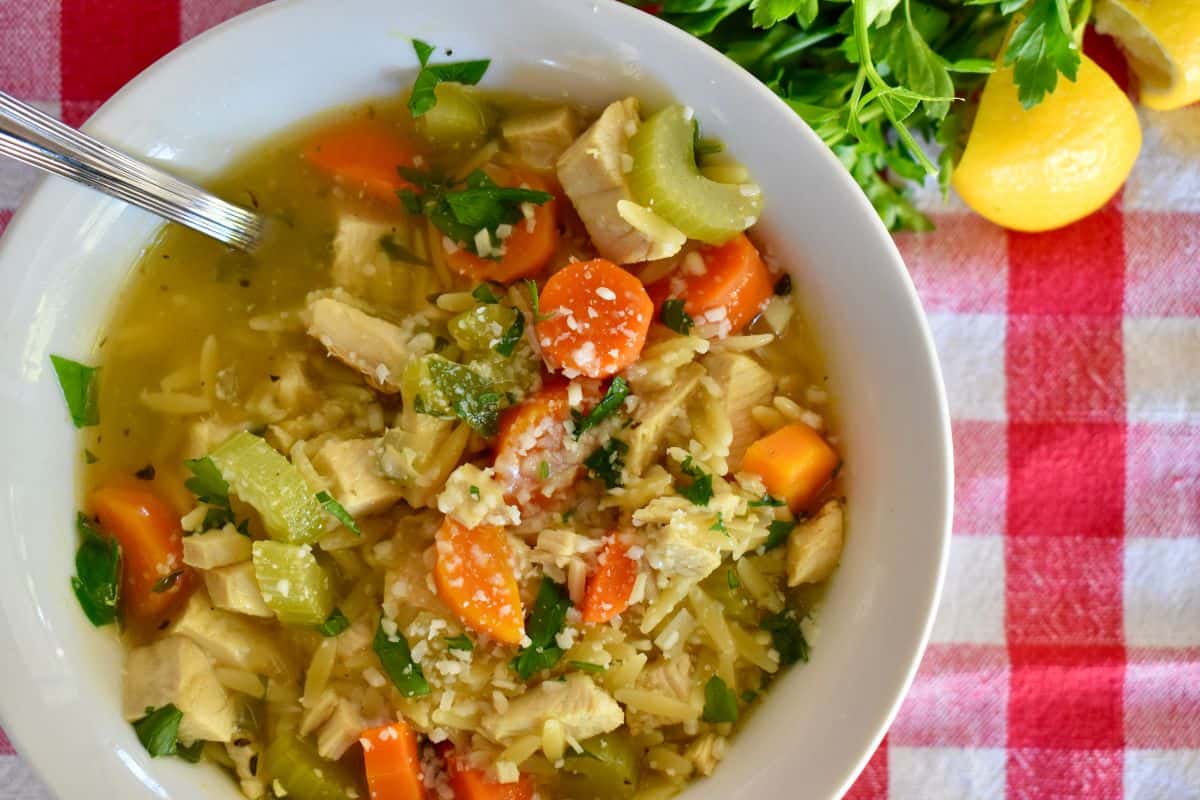
[This piece was written by Jamie Epting, MS, RD, Clinical Nutrition Manager for St. Peter’s Health Partners.]
As we begin a new year, many of us are conscious of our diets, as we discover we have probably indulged a little too much over the holidays!
One of the biggest stumbling blocks everyone faces when trying to control calories is dealing with hunger. Here are some great tips to keep yourself from over-eating when you’re hungry.
- Add high-fiber foods like fruits, vegetables, legumes and whole wheats and grains to your meals to bulk up dishes for larger portions with less calories. An added bonus is that many of these foods have a high water content which can also help to make you feel full.
- Try making large salads with lean protein and low calorie dressing or oil and vinegar. Add equal amounts of vegetables to pasta dishes to bulk them up for a larger portion with less calories and more vitamins and nutrients.
- Drink a glass of water before your meal. Not only is it a great way to stay hydrated, but it gives you a feeling of fullness and keeps you from overeating due to thirst.
- Set your plate for success. Fill your plate half way with veggies and divide the other half for lean protein and whole grains. Include a serving of fruit and low-fat dairy.
- Don’t skip meals, especially breakfast. People who skip meals tend to overeat at the next one, so it’s important to maintain a steady supply of fuel to keep your metabolism going. Starting your day with a good breakfast is essential!
- Keep healthy, calorie-controlled snacks on hand. If you have the right foods available you are more likely to choose them. Pre-make small bags or containers (about 100-150 calories each) of low-calorie snacks like fruits, veggies, unsalted nuts, rice cakes, whole grain crackers or dried fruits.
- When dining out, choose lean meats and fish that are baked, broiled or grilled, with sides of veggies and whole grains. Choose pasta dishes with marinara sauce and skip the high-fat, meat-based sauces. If the portions are huge, ask for a to-go container as soon as your meal arrives and pack up half for another meal.
- Eat consciously. Remember to be in the moment and taste your food. When we rush through a meal to get on to the next activity we tend to overeat.
- Turn off the TV and try to have family meals where good conversation is as nourishing as the food on your plate. Studies have shown children who regularly sit down to family meals are significantly less likely to have an eating disorder, and are more likely to eat more nutritious foods and be at a healthy weight.
Make 2018 the year you make mindful eating part of your everyday life. It is a gift to yourself all year long! For more suggestions and tips on healthy eating and living well, visit https://www.choosemyplate.gov/
Savory, Sweet and Full of Fiber – Sweet Potato & Black Bean Chili Satisfies!
Try this great recipe for sweet potato and black bean chili from eatingwell.com for a bulked up winter dinner.
Sweet Potato & Black Bean Chili
Ingredients
2 teaspoons extra-virgin olive oil
1 small onion, finely diced
1 small sweet potato, peeled and diced
2 cloves garlic, minced
1 tablespoon chili powder
2 teaspoons ground cumin
¼ teaspoon ground chipotle chile
⅛ teaspoon salt, or to taste
1⅓ cups water
1 15-ounce can black beans, rinsed
1 cup canned diced tomatoes
2 teaspoons lime juice
2 tablespoons chopped fresh cilantro
Directions: Heat oil in a large saucepan over medium-high heat. Add onion and potato and cook, stirring often, until the onion is slightly softened, about 4 minutes. Add garlic, chili powder, cumin, chipotle and salt and cook, stirring constantly, until fragrant, about 30 seconds. Add water, bring to a simmer, cover, reduce heat to maintain a gentle simmer and cook until the potato is tender, 10 to 12 minutes. Add beans, tomatoes and lime juice; increase heat to high and return to a simmer, stirring often. Reduce heat to maintain a simmer and cook until slightly reduced, about 4 minutes. Remove from the heat and stir in cilantro.





